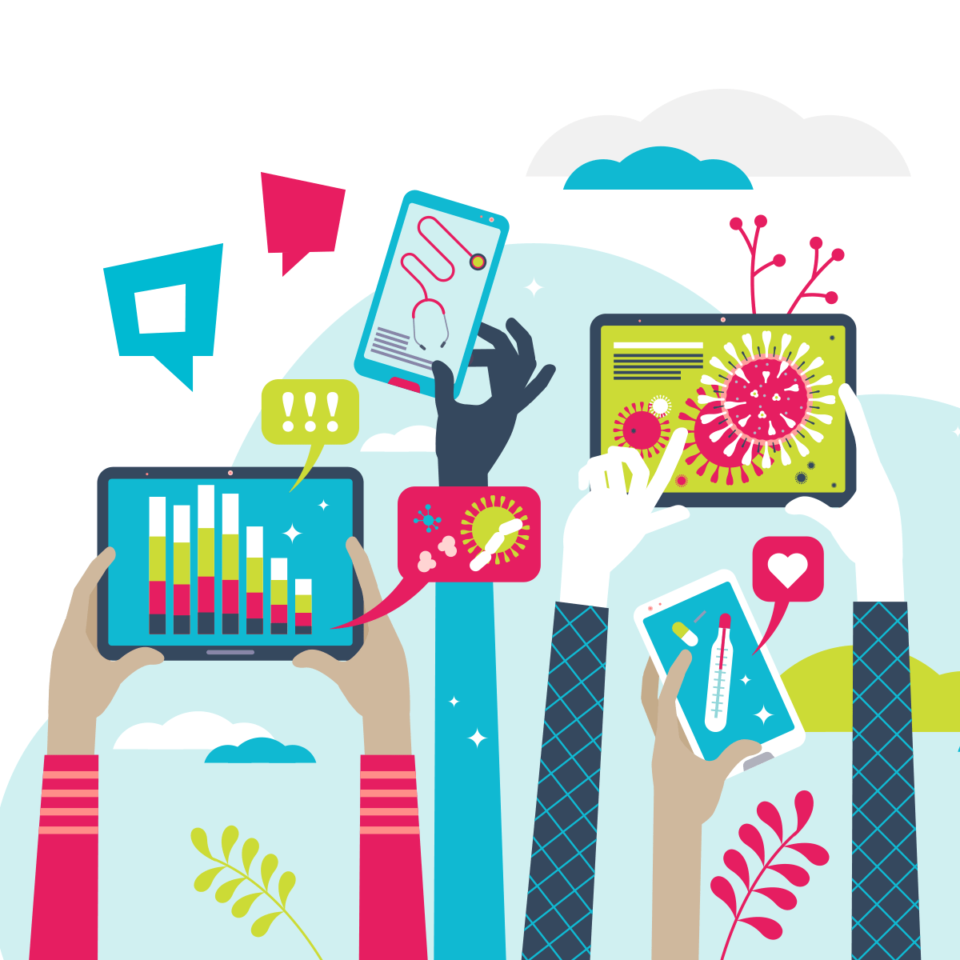Social Networks in the times of crisis: Where are we now and where we’re headed?
Social networks are online platforms that connect people and enable them to create and exchange content in real-time. They are favourite destinations that users frequent in order to get in touch with people of similar interests, explore a bit, and learn something, as well as to get entertained, informed, and inspired. These activities form the core of the social networks’ societal function.
Secondly, many of us have already created content and even purchased products and services via these channels. What is also important for the business world to realize is that social media users are eager to interact with brands around the world. These kinds of activities remind us that social media has enormous commercial potential.
Thus, brands and companies, when they’re devising online strategies, should always take into account the fact they exist online for people, not the other way around. It’s also important to recognize that building relationships between brands, and their online communities is a long and demanding process. On top of that, we have to acknowledge that online reputation is hard to establish and easy to tarnish. This should incite caution when producing content, communicating, and crafting marketing campaigns and messages. It’s time to unify the societal and commercial function of social media.
Now, due to social distancing measures, people are online more than ever, and the moment is right to start thinking about your online strategy. On that note, don’t hesitate to contact us.
COVID-19 Pandemic: Initial reactions from brands and consumers
Right from the onset of the COVID-19 crisis, it was clear we’re not dealing with just a health emergency and pandemic, but a global “infodemic”. People struggled to assess who to trust and how to cope with the overflow of information drowning them. This brings us to the topic of reputation, which is always crucial in customers’ evaluations, whether the brand is trustworthy or not. In times like these, this reputation can be very exposed and vulnerable to risks. Many brands are already under siege because customers observe them through the magnifying glass.
When it comes to brands on social media, after the state of emergency had been declared, they were patient and wary over the course of the first 7-10 days. They weren’t overly active and were keeping a close eye on the situation, consolidating internally. The priority was to preserve the health of employees and adjust operations and processes to new realities. After that, they had to decide on their marketing activities, which depended on the vertical market. Some businesses cancelled their campaigns altogether. That was the case with the brand Patagonia, which shut down not just its stores but the website as well.
On the other hand, German Adidas was under fire because of its decision to stop paying the rent on its stores (H&M and Sports Direct did the same) and then to keep its employers at work. The company called Geico had to call off a video commercial showing two people in close physical contact and doing the “high five” hand gesture. The same happened to KFC’s billboard and TV commercials that showed people licking their fingers after a meal.
The others advertised in reduced or same capacities, while at the same time adjusting their approach to the situation at hand. The Coca-Cola company launched a special campaign “One World: Together at Home” intending to gather some of the world’s most eminent musicians and support healthcare workers at the first line of defense against the pandemic. Another positive example is the famous Nike, which diverted its attention to the “Nike Training Club” app and offering it for free, a move that was met with the approval of users seeking to exercise at home.
Finally, some companies took advantage of the opportunity to enhance their visibility and marketing reach. Ford reacted quickly and canceled ads that were basically ready for deployment. In their place, the brand created completely new ads that promote payment assistance to customers, accounting for the fact that many of them don’t have money for pricey things like cars right now. Mucinex, a firm manufacturing health items and medicine, targeted fake news with the campaign “Spread Facts Not Fear” on social media and other channels.
Reactions of users and brands after a period of few weeks
Serious companies and brands don’t operate on autopilot, but carefully analyze the situation and their marketing efforts on social media and in general. They conceptualize them based on fresh insights streaming from the market. Global Web Index conducted a comprehensive study on markets that bore the brunt of the COVID-19’s impact. The results show people, for the most part, support brands in their marketing endeavors.
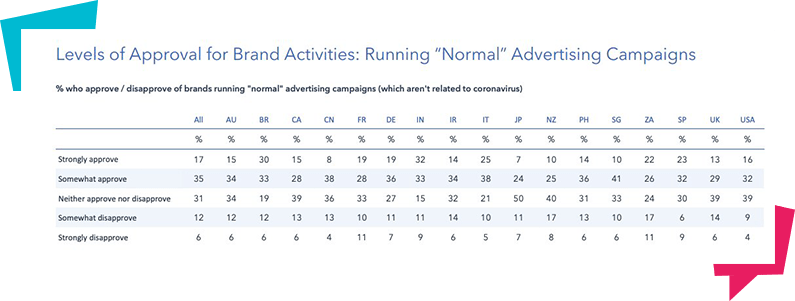
Image 1: an overview of the respondents’ answers to the question whether they approve running “normal” marketing activities during the Covid-19 pandemic. Source: Global Web Index
In terms of content, they obviously enjoy entertaining pieces, as well as advice on how to handle the crisis. It’s somewhat surprising that they approve of brands communicating the benefits of their offerings and promoting loyalty programs. Also, it was revealed that consumers largely support the reallocation of core business functions to the production of essential goods.

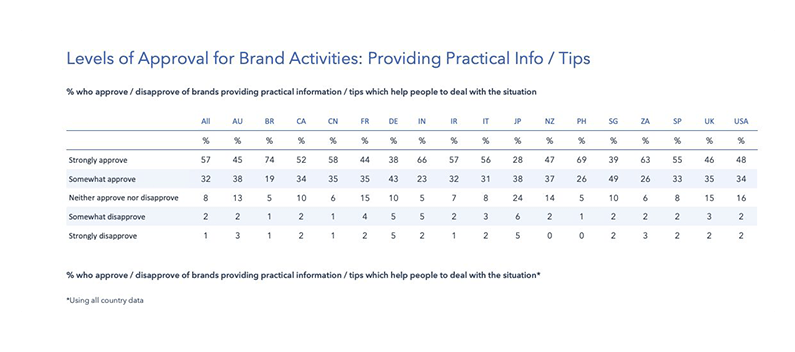
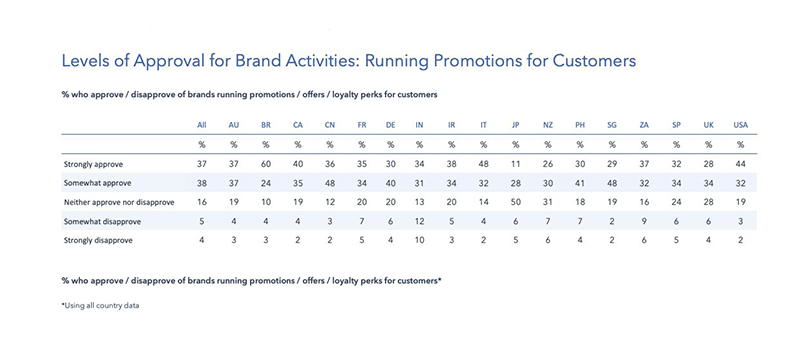
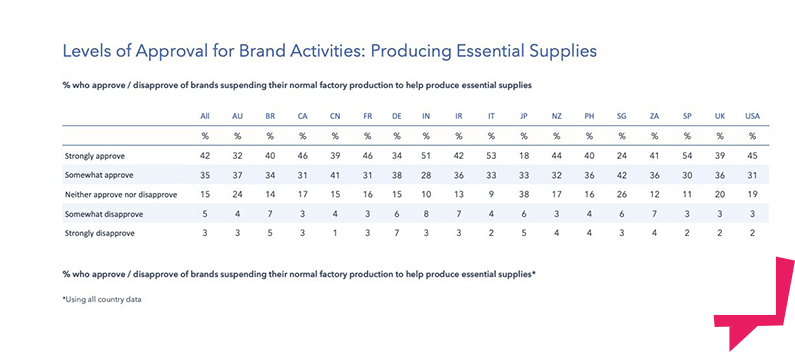
Images 2, 3, 4 and 5: Overviews of respondents’ answers to questions about what types of content they approve of. Source: Global Web Index
The same study discovered that apart from socialization with fellow tenants, top activities involve watching TV, browsing social media, and participating in chat platforms.
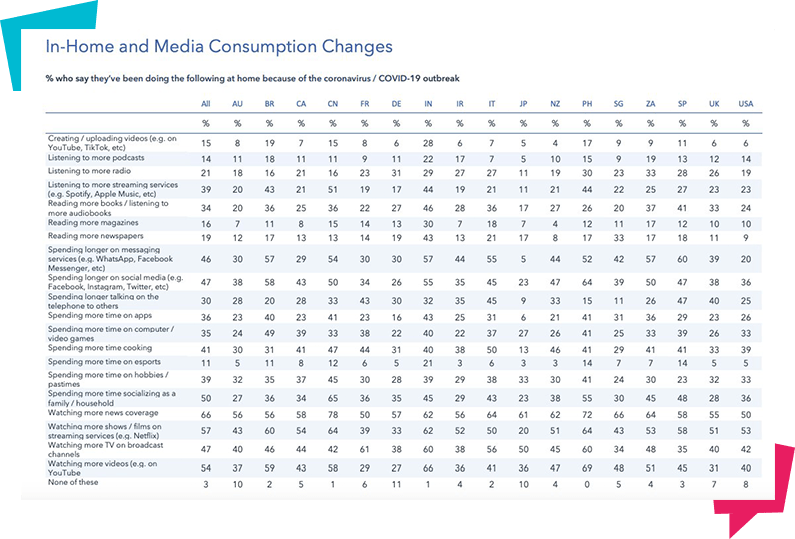
Image 6: An overview how people consume media during the Covid-19 pandemic. Source: Global Web Index.
Among the top 5 information points that people fancy are positive and inspiring stories about Coronavirus response and tips on how to stay active and healthy.

Image 7: Most relevant information according to the respondents. Source: Global Web Index.
As for the form of content, video remains the unrivalled king: movies and TV shows rank as #1, followed by funny, “how-to”, and DIY video clips.
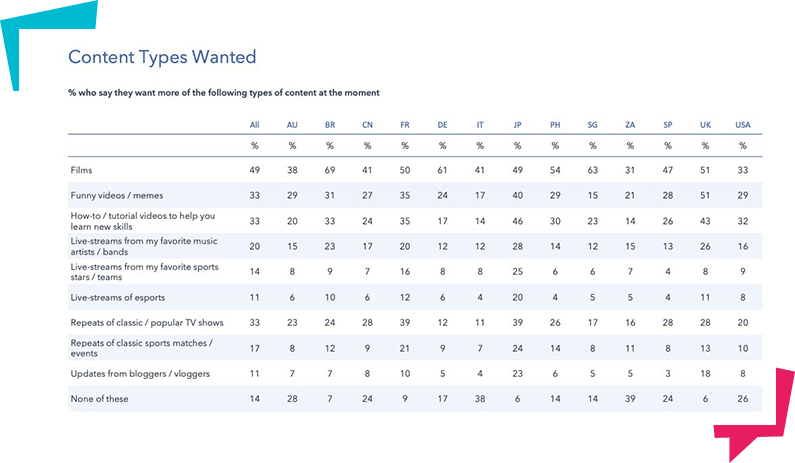
Image 8: Content that people want to consume. Source: Global Web Index.
According to data from Ogilvy Agency, in a matter of just 48 hours, 30 million emotion-based posts and 13 million brand-related posts about COVID-19 were published. This is to say that brands are quite present in conversations that are constantly taking place. In fact, after May 12, the volume of branded posts related to Coronavirus doubled compared to the week before that. Two-thirds of the sentiments were, quite expectedly, neutral in nature, which only suits the state of current affairs.
So, the lesson is clear: The life on social media didn’t come to a standstill; its focus has just shifted together with people’s needs. Like it or not, the “business as usual” can’t continue.
What does all of this mean for brands on social Media?
Considering human lives and their physical and mental wellbeing are impacted both directly and indirectly, it’s of paramount importance to understand the context in which your target market exists and to predict how its behaviour will develop in the future.
Hence, we think it’s vital to adhere to the following 5 principles, which aren’t exclusively linked to COVID-19 pandemic, but any kind of global crisis.
These are the five “golden rules”:
- Listen, Listen, Listen— pay close attention to what users are saying on social media, how they react, and what the discourse is about. Modify the approach accordingly.
- Be flexible— these are turbulent times, and we need to stay open to changes in tone of communication and core messages.
- Be transparent— under present conditions, transparency should be your main mantra, especially in the light of the tendency of people to trust brands more than governments.
- Adapt— set a new course for your strategy in response to the target audience’s new modes of behavior.
- Be on top of the game— Ponder ways in which you can help people as a brand.
The needs of people changed and we have to change too
If we boil these 5 principles down to a coherent approach, it would look like this in practice.
In the immediate wake of the outbreak, many companies showed their human face via social media. They didn’t publish commercial content, and as time passed by and fear diminished, they started modifying their approach. Now, they rely on the classic Maslow’s hierarchy of needs.
Namely, health and safety make the first and second place. Brands communicated posts that echoed #stayathome #staysafe messages, as well as infographics explaining how to behave to avoid getting oneself and others infected. National Geographic has made all COVID-19-related news available for free. Beer manufacturer Guinness appealed to drinkers to prioritize safety during Saint Patrick’s Day celebrations and donated half a million dollars. Reebok reacted in a similar fashion and encouraged followers to adapt to new conditions and work and exercise from home. Some, like Formula 1, went a step further and started manufacturing of respirators. Confectionery businesses tuned to making masks and delivery services enabled home contactless food deliveries. Many other companies donated money and demonstrated generosity in that way.
After that, we have the need for belonging— we all want love and fun in these grim times. Various streaming services lifted restrictions to their channels and allowed families to gather and enjoy entertaining content together. Along similar lines, brands across industry sectors created entertaining quizzes and games. For instance, AirConsole offered free unlimited access to their video games during the pandemic. Audible, in collaboration with J.K. Rowling, initiated a program “Harry Potter At Home”, which features educational quizzes, video content, articles, and audio-books.
It’s worth emphasizing that a large number of companies are trying to mitigate the effects of the crisis on their employees and let them know they’re essential members of the team despite the physical distance. Morgan Stanley and Bank of America are among the brands stating they won’t lay off workers and that they’ll permit paid sick leave. These are excellent instances of employer branding, a process that is gaining more importance in the climate of crisis and fear.
The fourth basic human need is self-respect. Here, the companies aspired to embolden employees with free food, education, birthday gifts… And so the restaurant chain Pret supported the overworked NSA employees by providing free hot drinks and discounts on other products. Chipotle handed away 10,000 free burritos, while Walmart, Hormel Food, and Danone gave their workers a raise.
At the very end, comes self-actualization. I’m sure you’ve seen ads for various free and discounted courses for learning new skills, competencies, and languages… This goes to show that certain types of businesses can profit during the crisis without jeopardizing their brand and reputation.
Successfully adjusting to the new normal
There are various speculations surrounding the topic of how life will look after the COVID-19 pandemic. Experts tend to agree that this whole situation will affect consumers for a while.
Long-term consequences are far-reaching and varied. The unemployment rate will go up and the buying power of the population will go down. People have already started spending less money on luxuries and non-essentials, such as jewellery and vacations. Not only that but they’ve become more sensitive to the greed of companies chasing only profits and forgoing care for the society and employees. It’s expected that the process of economic globalization will slow down, which threatens companies relying on international value/supply chains.
There are forecasts that foundations such as social contract and the role of government in the economy will be revised, altering the market conditions under which businesses operate. Work from home and other forms of flexible work arrangements gained traction, and that trend will continue after the crisis. All these changes give rise to the new online landscape, especially in the area of social media.
Steps in new directions will be easier in case you have a brand strategy in place. It should define your identity as a company, what you stand for, how you respond to change, and what your values are. The more human-like your brand is, the more authentic and approachable you’ll be. And that’s precisely what we need now on social media— a human approach that embraces social responsibility.
Also, it’s imperative to understand how social media networks function and how people behave on them. According to this intelligence, you need to tailor your online communication strategy. This kind of adaptation should reflect on everything you do, from content creation to interaction with social followers. Note that optimal times for posting have changed, as well as average message volumes. In the case of Facebook, for example, user activities are more consistent throughout the week, which means brands have more options regarding posting times. That being said, the adequate days now are Monday, Wednesday, and Friday (previously it was just Wednesday).
Advertising is affected too, which is visible through metrics such as advertising spend, click-through rate, and cost per click. In particular, as budgets got tighter, the ad spending shrunk, bringing the cost of ads down. These trends have shaped the first quarter of 2020, and they could persist throughout the rest of the year.
And one opportunity you don’t want to miss out on is capitalizing on significantly increased engagement rates across all major networks and industries. The best way to go about this task is to produce quality organic content and emit messages relevant to the audience. You can’t go wrong with content highlighting safety, solidarity, mental health, remote work, education, fund distractions, and social responsibility. Through it all, make sure to follow the principles of excellent crisis communication, even when the pandemic ends.
Whenever used correctly, social networks are a powerful commercial vehicle, but also the means of changing society for the better.
If you require support in developing your strategy, feel free to contact us.

